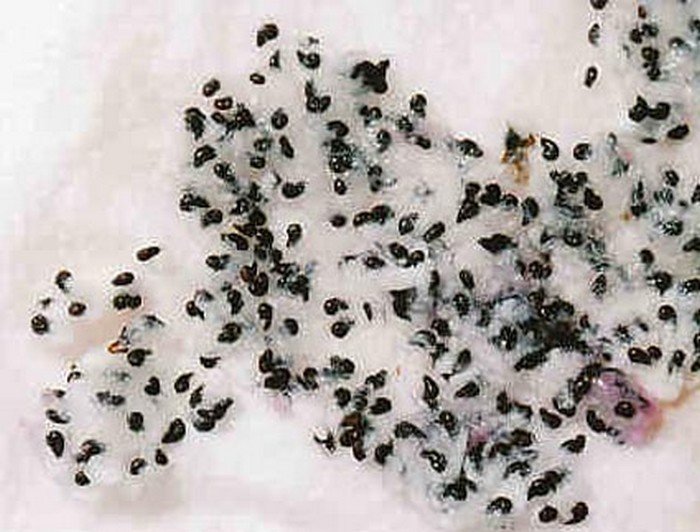* THE DIFFERENT STAGES OF *
* THE CREATION OF HYBRIDS *
* OF TWO EPICACTUS *
___________________________________
Page 3/8
▲ Harvesting ripe fruit, preparing seeds,
Here's an Epicactus fruit that isn't from the seedling that follows, nor from the hybrid of Ep. 'Arturo'.
But it bears a strong resemblance to the latter.
This almost ripe fruit is about the size of a plum.
When the fruit becomes a little soft, often purplish-red, and the seeds appear blackish when seen through the glass,
the fruit is ripe and must be harvested. Very often, the fruit is ripe 6 months to 1 year after fertilization.
Unfortunately, I haven't kept any photos of the harvesting of the fruit and of the seedling that produced the seeds of the Ep. 'Arturo' Ex Nat hybrids.
So I'm going to tell you about the harvesting of the ripe fruit, the sowing and transplanting of the seedlings.
using photos from an article written a few years ago about sowing Epiphyllum oxypetalum seeds.
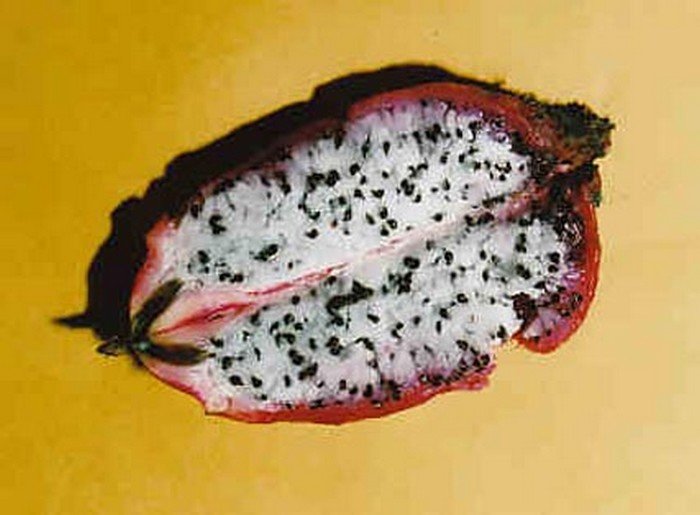
Half of the ripe fruit of Epiphyllum oxypetalum.
The seeds and pulp are placed on absorbent paper.
The seeds must now be washed to separate them from the pulp and surrounding gelatinous tegument.
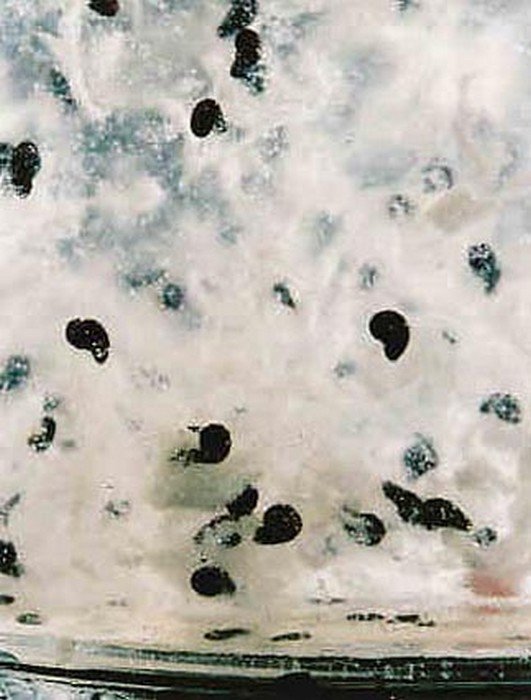
The seeds and pulp have been soaked in a glass of lukewarm water.
By stirring, the pulp begins to separate from the seeds.
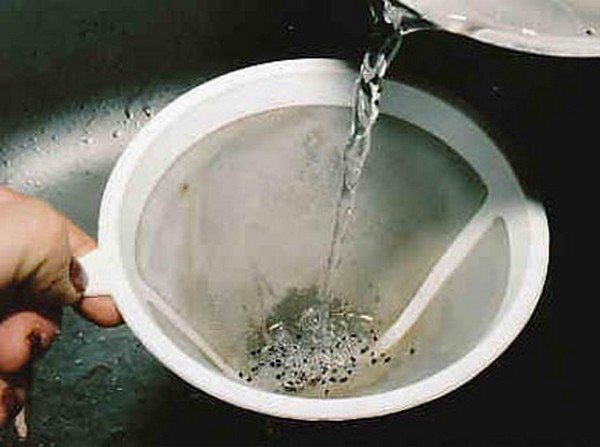
The seeds and pulp are placed at the bottom of a coffee filter.
By crushing the pulp-seed mixture with my fingers and pouring in water,
the filter lets the pulp through and retains the seeds.
Repeating the process several times removes the pulp.
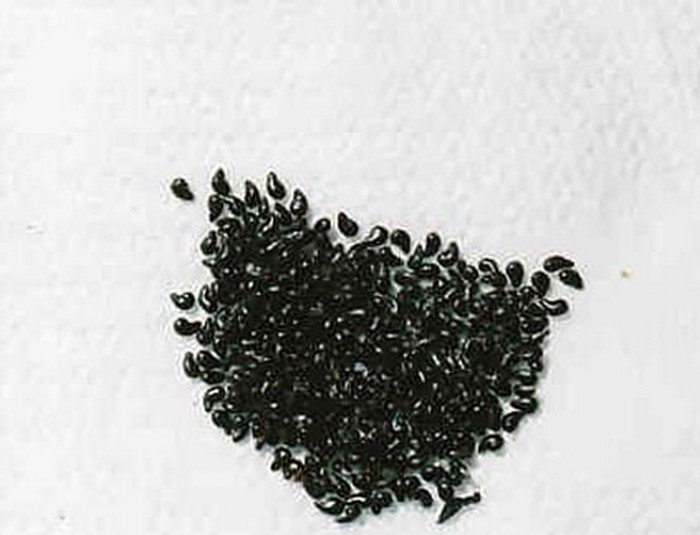
All that remains is to remove the gelatinous tegument surrounding the seeds.
To do this, I rub the seeds several times between two sheets of absorbent paper.
The tegument is gradually removed and I leave the seeds to dry.
They're ready to be sown.
<= =>
_______________
_________________________________________
